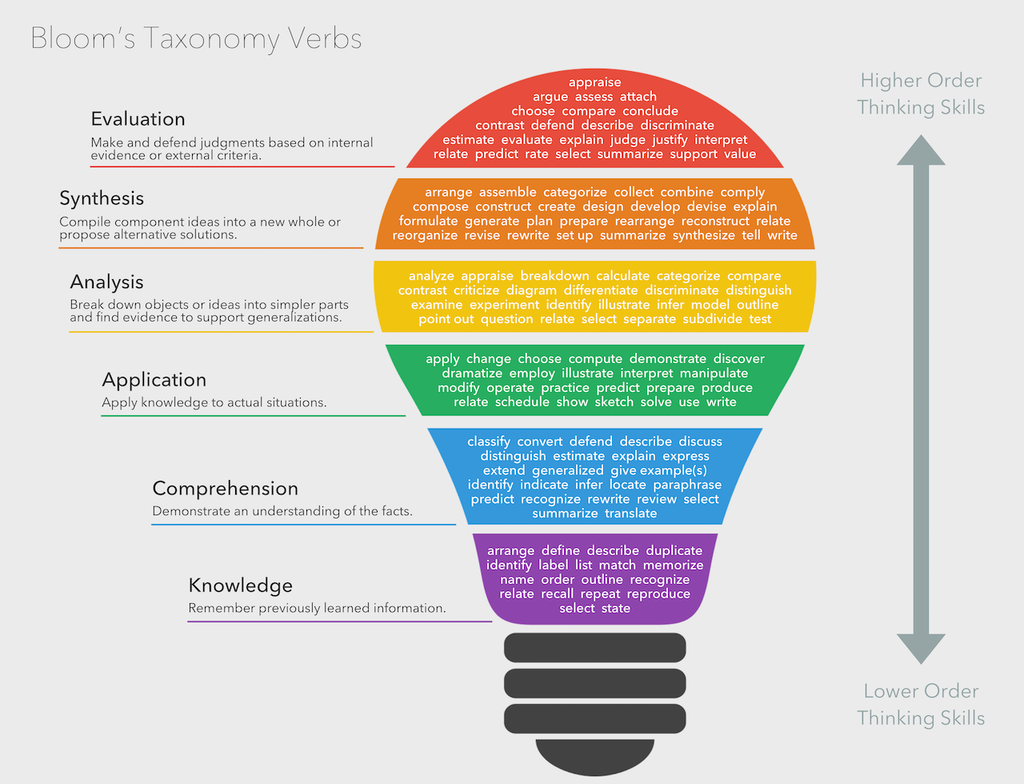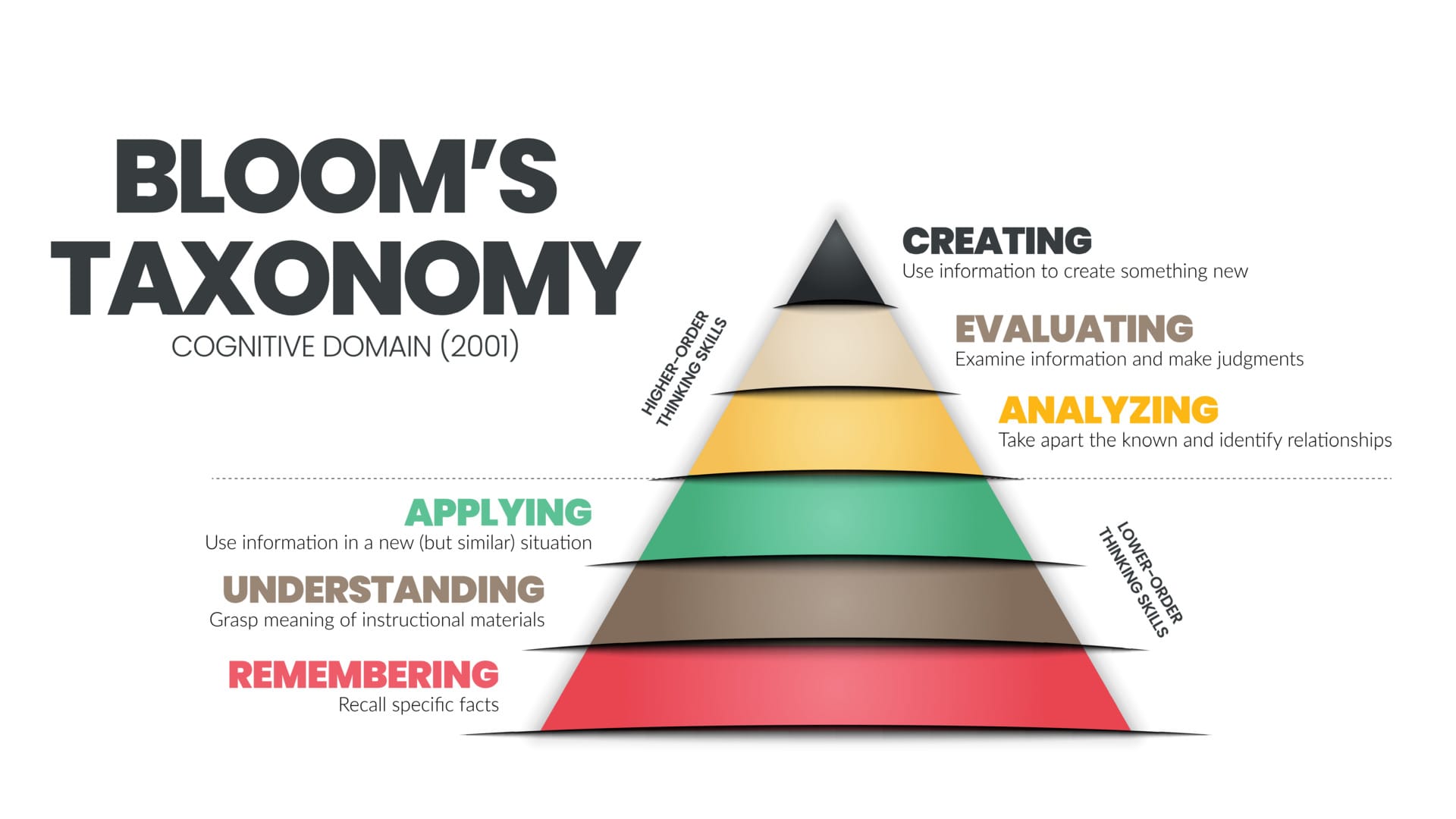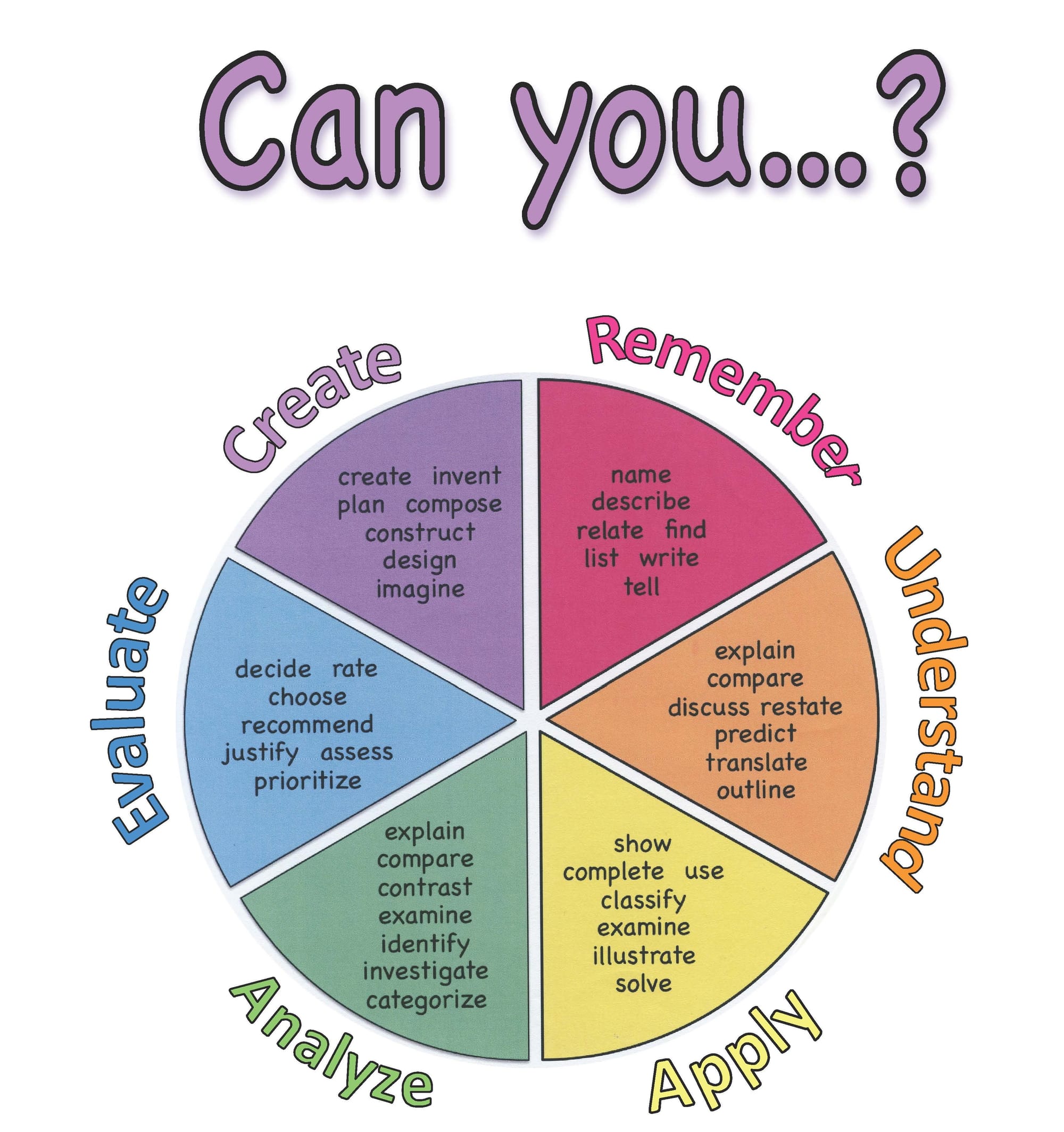Why Was I Tested on This? Understanding How Bloom's Taxonomy Shapes Assessments

Has your child ever come home frustrated, insisting they were tested on material not taught in class? This is a common concern among students and parents alike. Teachers use a framework called Bloom's Taxonomy to help students develop a wide range of cognitive skills. Understanding this approach can help you support your child better. I’ve included a link to a folder with original examples and practice questions for additional support.
Why Teachers Use Bloom's Taxonomy
Bloom's Taxonomy is a tool that teachers use to structure lessons and assessments. Its goal is to move students beyond memorising facts to understanding, applying, analysing, evaluating, and creating knowledge. This method ensures that students are well-prepared for real-world problem-solving and critical thinking. Specifically, the IEB (Independent Examinations Board) strongly emphasises higher-order thinking skills, making it even more crucial for students to engage deeply with the material.
How Bloom's Taxonomy is Applied in Lessons and Tests
Designing Lessons: Lessons start with basic knowledge and progress to more complex thinking. For instance, students might begin by learning the basic characteristics of vertebrates and later use this knowledge to compare different animals.
Crafting Assessments: Tests include a mix of questions, from recalling facts to applying concepts in new contexts. Your child might study lions and snakes but be tested on elephants and lizards, focusing on the broader concept of vertebrates rather than specific animals.
Encouraging Higher-Order Thinking: The aim is to move students beyond simple memorisation. By including tasks that require analysis, evaluation, and creation, teachers help students use their knowledge in new and meaningful ways.

Why Your Child Felt Unprepared
It's common for students to feel like they were tested on unfamiliar material. Here’s why this happens and how you can support them:
Explain the Process: Help your child understand that exams test not just memory but also understanding and the ability to apply knowledge. For example, knowing the characteristics of mammals can help them answer questions about any mammal, not just the ones they studied in class.
Encourage Reflection: Ask your child to think about how what they learned in class applies to different situations. If they studied vertebrates, they should be able to use this knowledge to identify characteristics in various animals.
Provide Practical Support: Develop study habits that go beyond memorisation. Encourage your child to explain concepts in their own words and practise applying their knowledge to new problems.
Communicate with Teachers: If your child frequently feels unprepared, discuss this with their teacher. Understanding the teacher’s expectations and getting tips on supporting your child’s learning can be very helpful.
Making Bloom's Taxonomy Relatable
To help your child relate to Bloom's Taxonomy, compare it to activities they enjoy:
Remembering (Knowledge): Like memorising the rules of a favourite game.
Understanding (Comprehension): Explaining the plot of a movie to a friend.
Applying (Application): Using a recipe to cook a meal.
Analysing (Analysis): Figuring out why a character in a book made a certain decision.
Evaluating (Evaluation): Judging a talent show performance.
Creating (Synthesis): Inventing a new game or story.
The Bloom's Taxonomy Verbs chart provides a visual guide to the action words associated with each level of Bloom's Taxonomy. These verbs illustrate the different cognitive skills that students are expected to develop, from basic tasks like "recall" and "describe" at the Remembering (Knowledge) level, to more complex tasks such as "evaluate" (Evaluation) and "create" (Synthesis) at the higher levels. By familiarising yourself and your child with these verbs, you can better understand the types of questions and tasks they will encounter in their assessments and how these are designed to build their critical thinking and problem-solving skills.

Everyday Examples
Here are some real-life examples to illustrate each level of Bloom's Taxonomy:
Remembering (Knowledge): Recalling the steps to a dance routine.
Understanding (Comprehension): Summarising the main points of a book.
Applying (Application): Using maths to calculate the total cost of items while shopping.
Analysing (Analysis): Comparing two different sports teams’ strategies.
Evaluating (Evaluation): Critiquing a new app or game.
Creating (Synthesis): Designing an original project for a science fair.
Boosting Problem-Solving Skills
Bloom's Taxonomy helps develop problem-solving skills by building from basic to complex thinking:
Remembering (Knowledge) and Understanding (Comprehension): Recalling and explaining concepts.
Applying (Application): Using knowledge in practical situations.
Analysing (Analysis): Breaking down complex problems to understand them better.
Evaluating (Evaluation): Assessing different solutions.
Creating (Synthesis): Developing original solutions.
Using the Bloom's Taxonomy Wheel
Bloom's Taxonomy wheel is a visual tool that helps teachers and students understand and apply the different cognitive levels. It categorises various activities and digital tools that can be used at each level. For example, apps like Quizlet can help with Remembering, while tools like Google Docs support Creating through collaborative projects.

Bloom's Taxonomy is more than just an educational framework; it's a powerful tool that helps students develop essential cognitive skills. By understanding and supporting this approach, you can play a crucial role in your child's educational journey, ensuring they are well-prepared for both academic and real-world challenges. At Education Incorporated, we are dedicated to fostering these skills through our personalised and innovative teaching methods. To help you and your child further, we’ve included a link to a folder with examples and practice questions. This resource will provide additional support and help demystify the learning process for both you and your child.
(All resources are original, public domain, paid for or used with permission)



